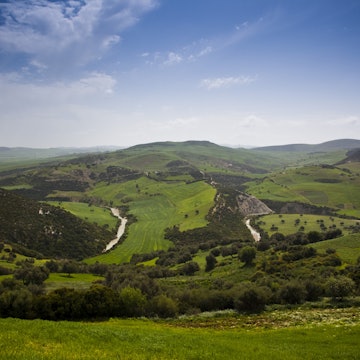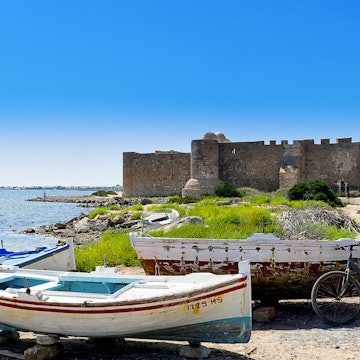

Shutterstock / Valery Bareta
Overview
It may be but a slim wedge of North Africa’s vast horizontal expanse, but Tunisia has enough history and diverse natural beauty to pack a country many times its size. With a balmy, sand-fringed Mediterranean coast, scented with jasmine and sea breezes, and where the fish on your plate is always fresh, Tunisia is prime territory for a straightforward sun-sand-and-sea holiday. But beyond the beaches, it’s a thrilling, underrated destination where distinct cultures and incredible extremes of landscape – forested coastlines, Saharan sand seas in the south – can be explored in just a few days.
Plan your trip with Guide, an AI travel planner!
Create a personalized trip itinerary in seconds using artificial intelligence.
Must-see attractions
Planning Tools
Expert guidance to help you plan your trip
Best Things to Do
Spring is the perfect season to visit Tunis.
Read full article
Best Places to Visit
The smallest country in North Africa crams an astonishing variety of riches into its compact territory. Here are the best places to visit in Tunisia.
Read full article
Best Time to Visit
Inside Tunisia’s compact borders, you’ll find everything you could ask for from the southern Mediterranean. Here are the best times to visit Tunisia.
Read full article
Transportation
Tucked between the Sahara and the Med, Tunisia packs a lot of wonders into its compact territory. Here's everything you need to know about getting around.
Read full article
in partnership with getyourguide




















